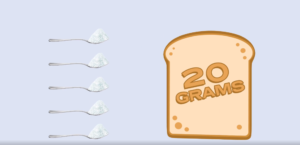Purple Foods
Purple Cabbage

Ideal Protein Phase
All phases
Significant Vitamins & Minerals
Vitamin A, C, & K
What would life be like without cabbage?? No coleslaw or sauerkraut? I would certainly be much hungrier without it! Coming in both green and purple (also known as red) varieties, cabbage is low in calories and high in nutrients, but when comparing the two varieties, the purple version is much more nutrient dense. The rich purple color is a result of the carotenoids beta-carotene, lutein and zeaxanthin. As you probably now know, beta-carotene converts into vitamin A when it is consumed, but what you probably didn’t know is that in purple cabbage, this micronutrient is 10 times higher than its green brother.
However, one of the greatest benefits to me of cabbage (other than it being so low in calories and filling), is that it is a great anti-inflammatory vegetable. In fact, some studies have shown that you can even put cabbage onto your skin when it’s irritated, using whole, shredded, or even ground up raw leaves as a topical ointment (by mixing it with some egg white).
Until I give that a whirl, I’ll keep eating this flavorful cruciferous veggie, enjoying the many ways I can prepare and ultimately consume it!
Eggplant

Ideal Protein Phase
2 &3
Significant Vitamins & Minerals
Vitamin A & C, Potassium, Fiber, Polyphenols (Antioxidants)
Admittedly, this nightshade isn’t the most nutritious of foods, and it’s not lacking in carbs (which is why it is a Phase 2 or Maintenance food). However, the purple color of this unique fruit (that’s right– it’s a fruit) comes from the polyphenols in its skin, and it is these antioxidants that provide the greatest amount of nutrients to consumers. In fact, it is among the top ten food items ranked in terms of their oxygen radical absorbance capacity. I, for one, had NO IDEA what that meant, so I did a little digging. Turns out that the antioxidants in fruits and veggies target the unstable atoms (called free radicals) in your body that damage cells and cause illness and aging (this is called “oxidation”). SOOO, how eggplant helps your body is by being one of the fruits highest in antioxidants that combat those unstable atoms, preventing a whole myriad of health issues.
Polyphenols also have the added benefits of potentially lowering your blood sugar levels. These micronutrients prevent the breakdown of starch into simple sugars, lowering the likelihood of blood sugar spikes after meals. Therefore, eating eggplant and other foods with polyphenols essentially decreases your chances of getting type 2 diabetes. Pretty cool, right?
Apparently, cutting eggplant to prepare them can actually damage the benefits of these polyphenols (you are cutting into the skin, after all), so maybe roasting them whole or even microwaving them before you continue to prepare them is a method to use.
Blueberries

Ideal Protein Phase
2 & 3
Significant Vitamins & Minerals
Vitamin C, A, B6, Anthocyanins, Phenolic compounds (quercetin)
I LOVE BLUEBERRIES. High bush or low bush, frozen or fresh, cooked or raw, they are just delicious, and SO packed of beneficial micronutrients. They are often considered to be the “healthiest” of all berries because of how many nutritional benefits they contain. The anthocyanins that give blueberries their distinctive color possess antioxidative and antimicrobial activities, improve visual and neurological health, and protect against various non-communicable diseases. They contain antidiabetic, anticancer, anti-inflammatory, antimicrobial, and anti-obesity effects, as well as prevention of cardiovascular diseases. It’s a veritable laundry list of benefits when discussing these tiny berries.
They are also completely void of any cholesterol while also having high quantities of fiber. So, the fiber lowers overall cholesterol in the bloodstream without adding any more from eating the fruit itself. And like all other berries, they are lower in carbohydrates than most other fruit options, making them an ideal choice for satisfying your sweet tooth when you reach Phase 2.
Blackberries

Ideal Protein Phase
2 &3
Significant Vitamins & Minerals
Vitamin K & C, Manganese, Fiber, Anthocyanins
Although these little guys aren’t quite as nutritive-packed as blueberries, they certainly give their blue cousin some good competition. High in fiber (half of the carbs in blackberries are from fiber), they have the same health benefits that blueberries bring to your system, but in a tangy/sweet package. Blackberries are also pretty much fat free, so you can get the healthy fats you need by combining them with some Greek yogurt during Phase 2 or Maintenance.
Although I’ve talked at length about Vitamin K & C, Manganese also plays a huge part in your overall health. Manganese may help prevent osteoporosis, manage blood sugar levels, and reduce epileptic seizures. Along with the many antioxidants that can boost brain and body health, the anthocyanins in blackberries have the same dramatic effects that they provide in blueberries. Overall, the lowering of inflammatory markers is pretty spectacular, and with the tangy tart flavor that these berries provide, they are a fantastic addition to your fruit-enjoying repertoire.
Purple Grapes

Ideal Protein Phase
3
Significant Vitamins & Minerals
Polyphenols, Potassium, Resveratrol, Vitamin E
Although grapes are limited to Maintenance, they still contain many of the same micronutrients that berries have (albeit in smaller amounts). The polyphenols and low-glycemic index of this fruit can help prevent the onset of type 2 diabetes.
They also contain a fair amount of potassium and vitamin E, helping with blood pressure regulation and improving the health of your skin and nails.
One of the best things about grapes however (other than that they are significantly cheaper than berries), is that they contain a compound called resveratrol, which studies have shown can prevent your body’s cells from storing fat so easily. In fact, consuming this antioxidant can actually help you lose weight. Granted, I would more likely recommend taking the supplement in pill form to get the benefits without the calories and carbs associated with eating large amounts of grapes, but these little orbs of sunshine and flavor are well-worth it as part of a balanced maintenance program. I’m a huge fan of eating them frozen (instead of a sugary popsicle)!




